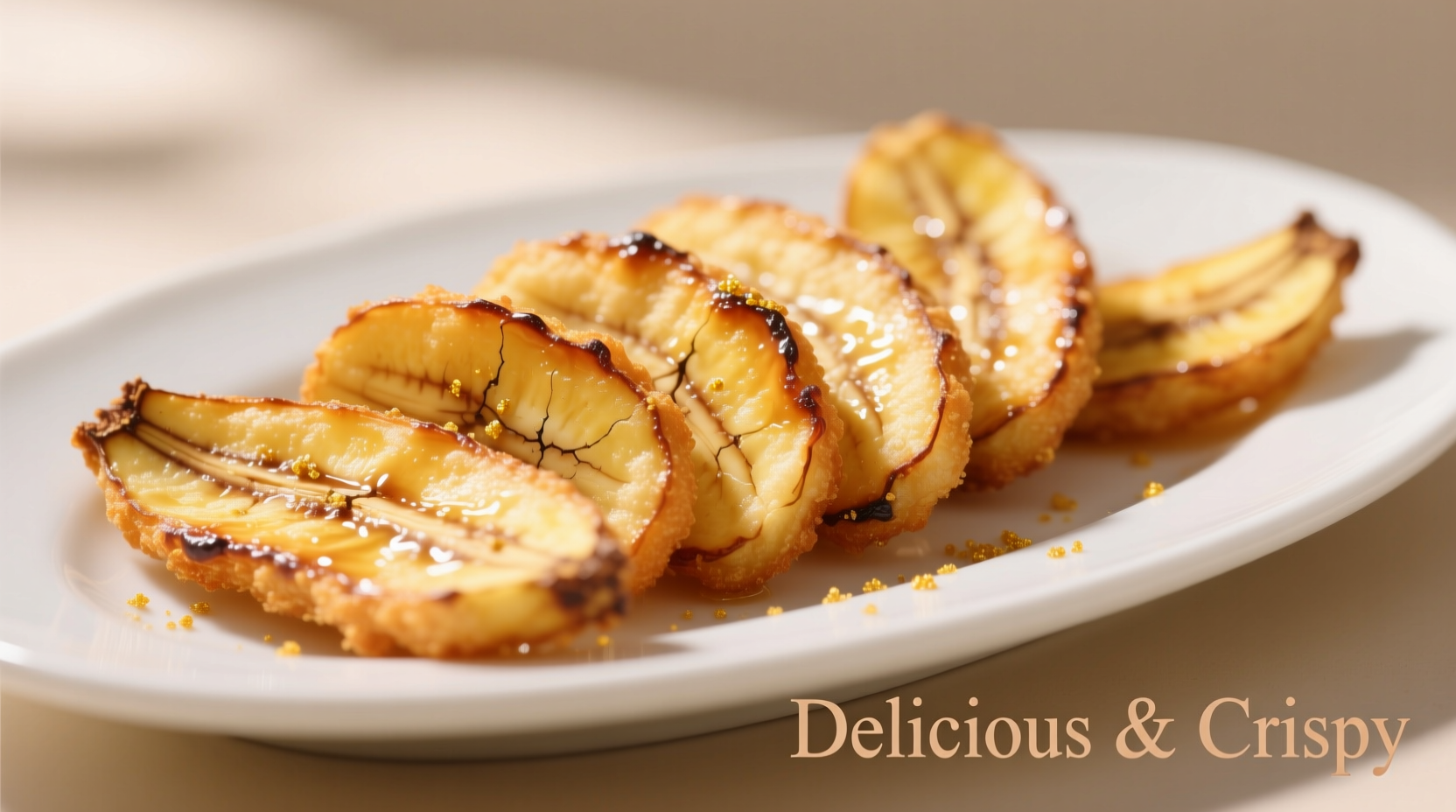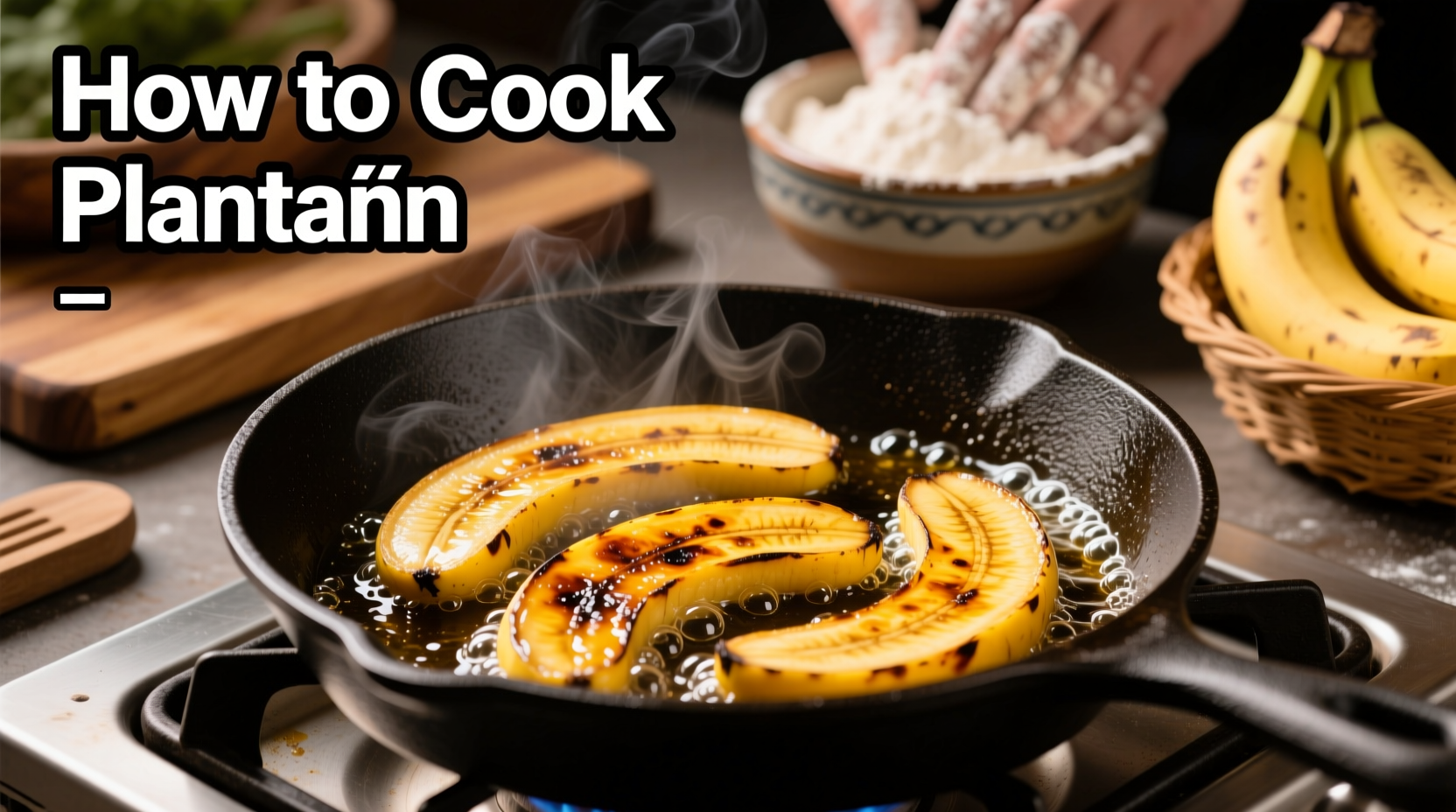Ever wondered why your fried plantains turn out mushy or burnt? The secret lies in understanding ripeness stages and proper technique. As a staple across Latin America, Africa, and the Caribbean, plantains offer incredible versatility when cooked correctly. This guide reveals professional methods to achieve golden, crispy edges with tender centers every time—whether you're making tostones, maduros, or plantain chips.
Understanding Plantain Ripeness: Your Cooking Blueprint
Plantains progress through distinct ripeness stages that dramatically affect cooking outcomes. Unlike bananas, plantains must be cooked before eating. The peel color tells you exactly what to expect:
| Ripeness Stage | Peel Appearance | Flavor Profile | Best Cooking Methods |
|---|---|---|---|
| Green | Solid green, firm | Starchy, neutral | Frying (twice for tostones), boiling |
| Yellow | Yellow with black spots | Sweetening, mild banana flavor | Frying, baking |
| Black | Almost entirely black | Sweet, caramelized | Frying, grilling |
This ripeness guide comes from UN Food and Agriculture Organization research on tropical fruit development. Choosing the right stage prevents common cooking failures—green plantains won't caramelize properly while overripe ones turn mushy when fried.
Essential Preparation Techniques
Peeling plantains requires a different approach than bananas. For green plantains:
- Cut both ends off the plantain
- Make shallow lengthwise incisions through the peel
- Gently pry open the peel with your fingers
- Remove any fibrous strings clinging to the flesh
For yellow or black plantains, you can often peel them like bananas. Always slice against the natural curve for even cooking. The FDA recommends keeping cut plantains in acidulated water (1 tbsp lemon juice per cup water) if not cooking immediately to prevent oxidation.
Mastering the 5 Key Cooking Methods
Frying: The Classic Approach
Frying creates the perfect crispy exterior while maintaining tender interior. Follow this professional sequence:
- Heat neutral oil (avocado or vegetable) to 350°F (175°C) in a heavy skillet
- Cut plantains diagonally into ½-inch thick slices
- Fry in single layer for 3-5 minutes per side until golden
- Drain on wire rack (not paper towels) to maintain crispness
- Season immediately with sea salt
For tostones (twice-fried plantains), flatten cooked slices with a tostonera or heavy glass, then refry for 2 minutes. This technique, documented in National Academy of Sciences food processing guidelines, creates superior texture through controlled starch gelatinization.
Baking: Healthier Alternative
For oil-free preparation:
- Preheat oven to 400°F (200°C)
- Toss plantain slices with 1 tsp oil and spices
- Arrange on parchment-lined baking sheet
- Bake 20-25 minutes, flipping halfway
Boiling: Foundation for Many Dishes
Essential for mofongo and other traditional preparations:
- Peel and cut green plantains into chunks
- Cover with cold salted water
- Bring to boil, then simmer 15-20 minutes until fork-tender
- Drain thoroughly before mashing

Troubleshooting Common Plantain Problems
Why Plantains Stick to the Pan
Oil temperature is critical. When oil drops below 325°F (163°C), plantains absorb oil and stick. Use a thermometer and maintain consistent heat. Cast iron provides the most even heating for perfect frying.
Burning vs. Proper Caramelization
Black spots indicate burning, not caramelization. For yellow plantains, cook at slightly lower temperatures (325°F/163°C) to allow natural sugars to develop without scorching. The Maillard reaction occurs between 285-325°F (140-163°C)—staying within this range creates optimal flavor development.
Recipe Ideas by Ripeness Stage
Green Plantain Creations
- Tostones: Twice-fried smashed plantains with garlic salt
- Mofongo: Mashed green plantains with pork cracklings
- Plantain Soup: Boiled chunks in hearty vegetable broth
Yellow-Black Plantain Specialties
- Maduros: Sweet fried plantains with cinnamon
- Plantain Pancakes: Mashed ripe plantains with eggs and flour
- Grilled Plantains: Sliced lengthwise and grilled with lime
Storage and Reheating Guide
Cooked plantains maintain quality for 3-4 days refrigerated in airtight containers. For best results when reheating:
- Air Fryer: 350°F (175°C) for 3-4 minutes
- Oven: 375°F (190°C) on wire rack for 5-7 minutes
- Avoid Microwave: Creates uneven texture and sogginess
Freeze uncooked plantain slices between parchment paper for up to 3 months. Thaw in refrigerator before cooking for consistent results.











 浙公网安备
33010002000092号
浙公网安备
33010002000092号 浙B2-20120091-4
浙B2-20120091-4